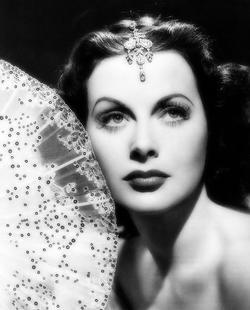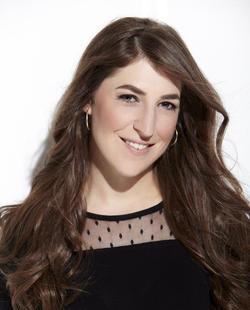Actress-Scientists
You probably wouldn’t expect that we could have multiple entries in a category for actress/scientist. After all, we tend to think of people as being either/or. If you’re a scientist or inventor, you must be mono-focused, introverted, anti-social. If you’re an actor or celebrity, stereotypes suggest that you’re gorgeous but flighty, lacking intelligence or substance. Despite our knowledge that most women are multi-talented multitaskers, we insist on fitting them into narrow categories, denying their complexity. Hedy Lamarr and Mayim Bialik challenge us to rethink our limiting assumptions and to recognize the creative range of women’s abilities.
Hedy Lamarr suffered from other people’s preconceptions throughout her career, fighting the limits her image placed on her identity. Born Hedwig Kiesler in Vienna, Austria, she changed her name to rebrand herself in America, to seem less foreign, less dangerous. It also helped her leave behind the notoriety she’d gained in Europe for nude scenes she’d done as a young woman and start over as a serious actress.
Once in America, she made an incredible contribution to the war effort by creating frequency-hopping technology to prevent radio signal jamming (which also laid the groundwork for sending data in bits over the Internet), but her contributions were forgotten and she wasn’t publicly credited or honored for her invention until 1997. And while she gave stellar performances in films from the 1930s through the 1950s, Hollywood had few roles for older women; Lamarr was unable to find work in her later years and ended up bankrupt and destitute.
Looking at Hedy Lamarr’s career, one encounters a woman born in a time when she could only express a fraction of her phenomenal potential: had she been born a couple of decades later, she could have ridden the wave created by aging Baby Boomers demanding to see their own stories represented on screen. Lamarr might have thrived in the kinds of roles we now see played so splendidly by actresses like Meryl Streep, Helen Mirren, and Judi Dench. Or she might have become a Silicon Valley entrepreneur. Instead, unable to find work and heavily in debt, Lamarr spent the last years of her life literally fighting for the right to define herself: suing the ghostwriter of her autobiography for defamation of character and various producers and media companies for using her name and likeness without permission.
Mayim Bialik’s career shows just how far women have come, both in Hollywood and the larger world. She started out playing the young version of Bette Midler’s character in Beaches, perfectly capturing Midler’s swagger, her campiness, her comic timing, and her unapologetic strength. It was these qualities that landed her the role that made her famous as a teen, as the quirky star of the sitcom Blossom. As Blossom, Bialik overturned all kinds of expectations: she was a teen idol without being a sex object, and she got to make the jokes, not just create setups for the adult, male comedians on the show. The character was smart, genuinely funny, and impossible to categorize.
When Blossom was cancelled, though, most people expected her to fade into obscurity. Until recently, people assumed once your show was over, so were you: surely no audience would ever be able to see you in another role. And Bialik had another cross to bear as a child actor, expected to descend into drug addiction and tabloid notoriety. Instead, she sidestepped the role society mapped out for her and moved on to a university education and a career as a neuroscientist. In a way, her work in neuroscience focused on helping others defy expectations: she studied behavioral problems in patients with Prader-Willi Syndrome, a rare genetic condition that can cause obsessive-compulsive behavior, obesity, and attachment disorders along with a variety of physical disabilities. But new behavioral therapies have helped Prader-Willi patients manage their impulses and live more normal lives.
When Bialik returned to acting, it was on her own terms, playing a character as intelligent as herself (a neuroscientist, no less!) in the hit comedy The Big Bang Theory—a role for which she has been nominated three times for an Emmy Award. She also ensured that her work schedule allowed her enough time to be fully present for her children, refusing to choose between these two important aspects of her life. Her success in two fields where women have historically had to fight to be taken seriously is a testament to her talents and to her determination.




